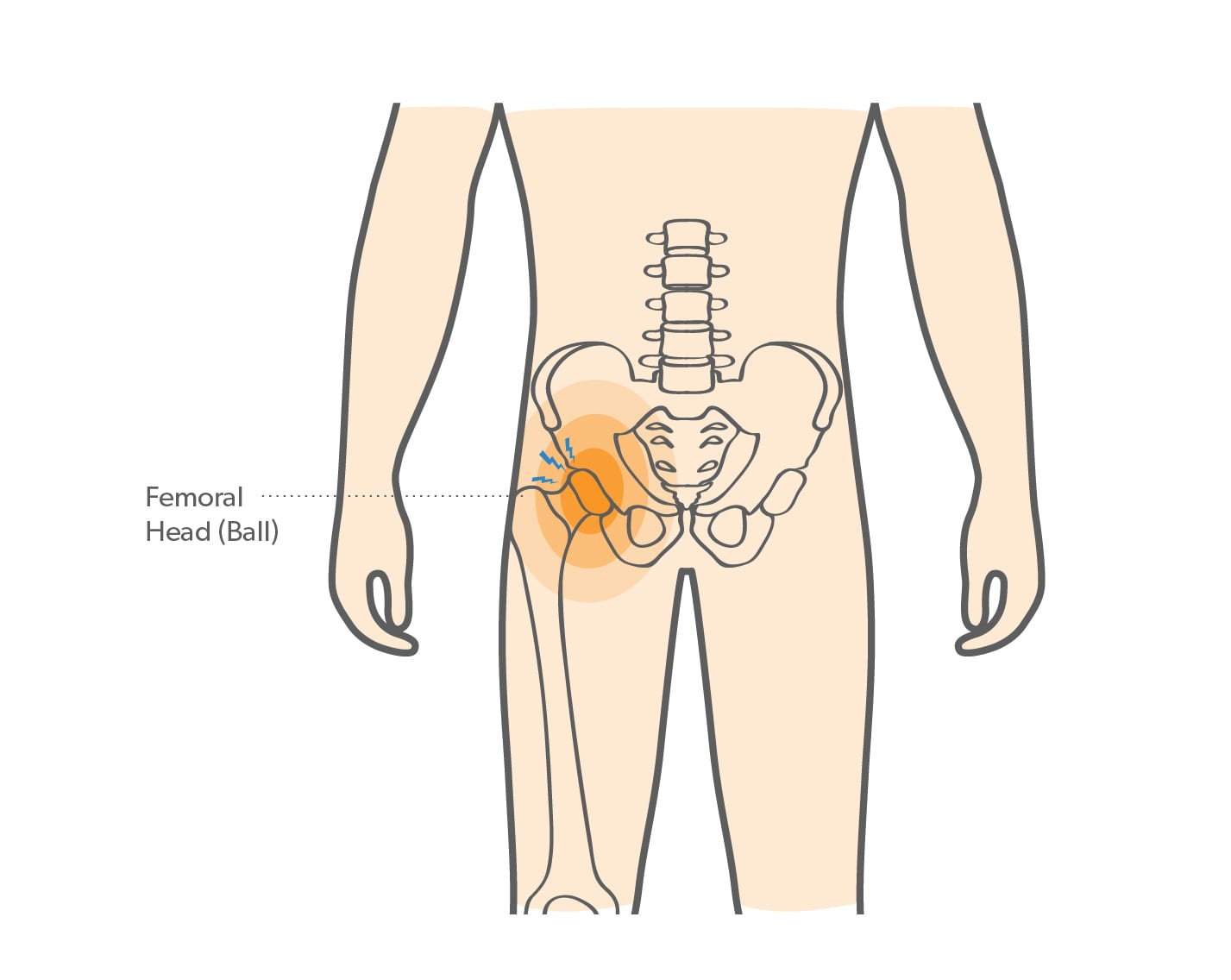Athletes with internal snapping hip syndrome, also called “dancer’s hip,” hear a snapping or popping sound and often feel a snapping sensation in their hip during certain movements. It is experienced most often while straightening the hip from a flexed position. It typically does not occur while walking. The internal hip snapping is caused by the hip flexor tendon rubbing over a bony structure in the hip. It usually doesn’t cause any harm, but for some people, the condition can be painful and limit athletic performance.
Internal Snapping Hip Syndrome Symptoms & Treatment
Athletes with internal snapping hip syndrome, also called "dancer's hip," hear a snapping or popping sound and often feel a hip popping sensation during certain movements. It is experienced most often while straightening the hip from a flexed position. The snapping is caused by the iliopsoas tendon rubbing over a bony structure in the hip.
Overview
Overview

What causes Internal Snapping Hip Syndrome: Symptoms, Treatment, and What to Expect?
The internal snapping hip syndrome typically results from tightness in the hip flexor muscle and iliopsoas tendon in front of the hip. This type of snapping occurs when the tight hip flexor muscle or tendon moves over a protrusion at the front of the hip joint. This movement creates tension between the two structures, causing a “snap” when they move apart. Internal hip snapping results when either of these happens:
- The iliopsoas tendon, which connects the two inner hip muscles to the femur (thighbone), moves over the iliopectineal eminence, a protrusion of the pelvic bone.
- A quadriceps muscle called the rectus femoris, goes over the ball of the ball-and-socket joint (femoral head) of the hip.
Sports associated with internal snapping hip syndrome include:
- Dancing (especially ballet)
- Gymnastics
- Short distance running
- Soccer
- Rowing
- Martial arts
Symptoms
People with internal snapping hip syndrome experience a hip popping sensation or snapping sound when engaging in certain sports-related activities. Usually, they feel no pain at first. But over time, internal hip snapping can lead to inflammation of the iliopsoas tendon, called tendinitis, which may be painful. Other symptoms that may be associated with snapping hip include:
- Occasional instability and sense of giving way
- Occasional sense of locking of the h
- Muscle weakness
- Frequent limp, especially after exercising
- Groin clicking during certain movements
When to see a doctor
Often, people with internal snapping hip syndrome do not seek medical treatment unless they experience pain. If you are bothered by the hip popping sensation or snapping or have mild pain, there are home treatments you can try. These include:
- Applying ice to the front of your hip
- Taking a nonsteroidal anti-inflammatory (NSAID) medication like ibuprofen as directed for a few days
- Limiting your athletic activity, including sports that involve a repetitive movement of the hip
If your symptoms don’t improve, see your doctor. He or she will ask about your symptoms, the sports you play, and activities that cause the internal hip snapping. Your doctor will examine your hip, looking for signs of malalignment, weakness, or tightness of the muscles, and may ask you to move your hip to prompt the hip-popping sensation. He or she may also order an x-ray to help rule out other factors causing you pain.
Non-operative treatment
Your doctor may recommend several treatment options, including:
- Rest
- Ice
- Over-the-counter medications, such as a nonsteroidal anti-inflammatory (NSAID) medication like ibuprofen
- Corticosteroid injections into the bursae, or fluid-filled sacs around the iliopsoas tendon, to reduce inflammation and pain
Physical therapy for stretching and other soft tissue modalities. - Physical therapy for stretching and other soft tissue modalities
Try these exercises to help address your condition:
Below is a PDF of the Exercise Program
Surgical Treatment
Internal snapping hip syndrome is usually treated without surgery. In rare cases where the hip popping sensation is extreme, and the pain has been persistent for months and non-responsive to non-surgical options, surgical release of the iliopsoas tendon – either as an open or arthroscopic procedure – may be helpful in alleviating the painful internal hip snapping.
Recovery
Athletes can return to play when they can perform their usual sports-related activities without pain. To hasten your return to sports, you may consider substituting repetitive motion activities (e.g., cycling, running) with other forms of exercise or sport (e.g., swimming) that are less likely to aggravate your hip. Many times, the groin clicking or hip popping sensation may persist, but as long as the pain resolves, it is safe to return to play. Following your doctor’s guidance on stretching and exercises, even after symptoms have resolved, will help prevent a recurrence of the inflammation and pain.
GET BACK TO WHAT YOU LOVE. FASTER
Sources
https://orthoinfo.aaos.org/en/diseases–conditions/snapping-hip/
https://www.sports-health.com/sports-injuries/hip-injuries/3-types-snapping-hip-syndrome
https://www.webmd.com/a-to-z-guides/snapping-hip-syndrome-causes-symptoms-treatments#1
https://www.sportsmedtoday.com/snapping-hip-syndrome-va-138.htm
https://www.healthline.com/health/snapping-hip-syndrome
Frequently Asked Questions
Can internal snapping hip syndrome go away on its own?
Mild cases can be resolved with rest and stretching. However, if symptoms persist beyond a few weeks, medical evaluation is advised.
How can I tell if my hip snapping is something serious?
Snapping hip is often harmless, especially when it’s painless. But if you notice persistent pain, swelling, or difficulty moving the hip, it could indicate irritation or injury that needs medical attention.
Do I need surgery if physical therapy doesn't help?
Usually not. Before surgery, doctors often explore more intensive conservative treatments, including corticosteroid injections or advanced physical therapy modalities. Surgery is a last resort for cases unresponsive to months of treatment.
What kind of exercises help with recovery?
Stretching the hip flexors, iliopsoas, and quadriceps is key. Strengthening the glutes and core also helps stabilize the hip and prevent recurrence.

